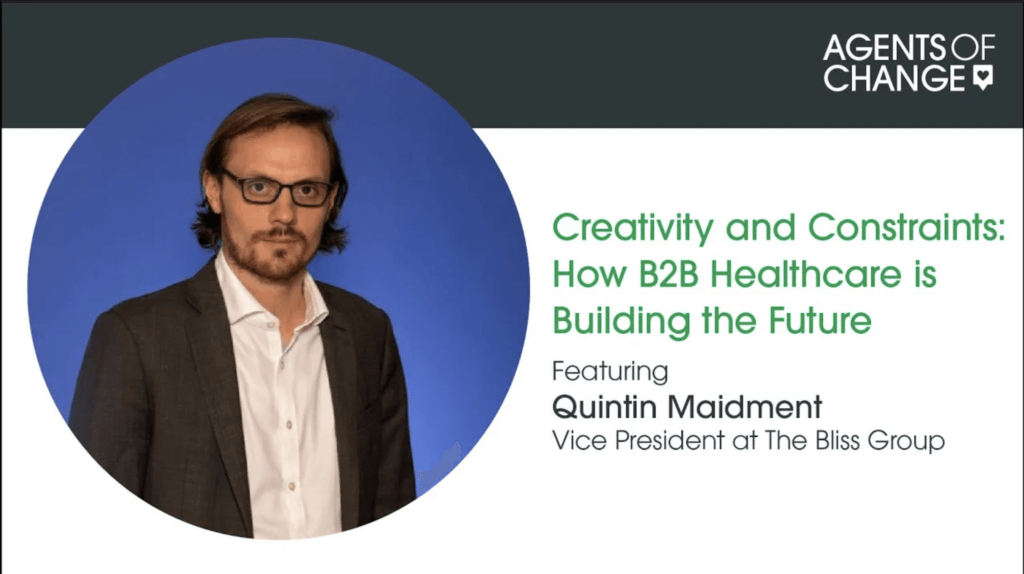The fact that the buying journey has changed—and continues to change—significantly in recent years is no secret. This is especially true in the B2B space.
In this LTTV: Agents of Change episode, VP at Bliss Group, Quintin Maidment, shares his healthcare marketing experience: “We’re seeing this shift broadly within the industry—which you [also] see in other sectors. Individuals are making a lot more healthcare decisions…There’s no one central truth of authority anymore.”
The buying process has become increasingly individualized and client-led, even in the B2B market. What does this mean from a marketing perspective? Quintin believes it’s about doing more, being more intentional with your audience(s), and becoming an information sponge.
Catering to Multiple Audiences
In healthcare marketing, Quentin faces the unique challenge of speaking to both B2B and B2C audiences. For example, when marketing clinical trials, the messaging needs to apply to the following B2B and B2C audiences: physicians, who essentially serve as a voice of authority in advising their patients on whether to participate in such trials; and patients, who usually want very different information when deciding for themselves.
The knowledge Quentin has gained with this challenge is applicable to any B2B marketer in any industry. Regardless of whether there is a B2C audience, there is often a need to sell to multiple groups, which requires a few different approaches to the messaging.
Quintin advises that it comes down to “having concentrated campaigns and broader thought leadership to reach all of the audiences that you need.” He believes it’s an area that the public relations industry often falls short in: lacking an understanding of clients’ businesses.
When looking at who will ultimately purchase your clients’ products or services, it’s important to identify the influencers in that ecosystem and understand the relationships between the various players in the buying experience.
In This New Buying Journey, What Moves the Needle?
If the buying journey has shifted and a need for a new marketing approach has emerged, then it makes sense to consider redefining “moving the needle.”
When asked for his definition, Quintin shared that for him, it’s gaining audience trust and reframing their mindset of where to turn for solutions. It’s about understanding how your industry is evolving and being prepared to market accordingly.
In healthcare marketing, he believes that growing this trust and developing these relationships will result in scientific innovation, power, longevity, and quality of life—and will improve the lives of millions of people by bringing more drugs to the market at a lower cost.
The same can be said for your industry. Gaining your audience’s trust by catering to each sub-audience specifically with a solution they need allows for significant change.
Where Should You Begin?
So where do you begin in adapting to these changes? Where do you place your focus?
For Quintin, he says he spends most of his time reading the trade press, knowing what reporters are writing, what makes a story, what’s trending in the industry, and where the industry is going. No industry is evergreen; constant changes require constant evolution.
“I think it comes back to having a mindset that is always thinking: ‘Let’s learn more. Let’s read more. Let’s understand more. Let’s speak to smart people and work with smart people.’ That’s the best advice I have; it’s to try to be an information sponge as much as possible,” Quentin says.
So do it—be that information sponge. Learn who your audience is, how they’re buying, and what they care about. Then speak to that, and speak to each of them—individually if needed.
Ready to deep-dive into audience discovery and catered messaging? Let’s talk!
